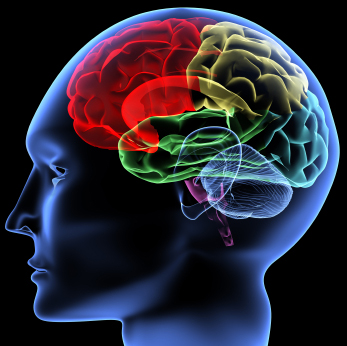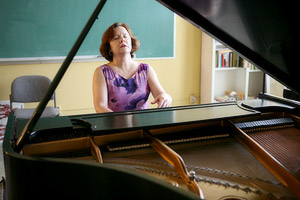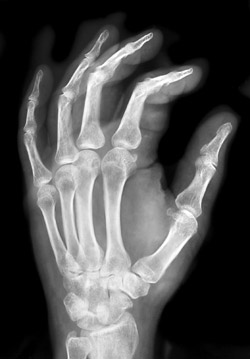Lecture Topics
The Self Map
The concept of the self map became a point of discussion in the Coordinate Movement Program following a performance by one of our students. The performer played with poise and accuracy, yet something was missing. Barbara Conable, who was leading the class, asked the student, “Do you consider yourself an artist?” Silence fell across the room and the young woman looked dumbfounded. It became clear in the ensuing conversation that the student had no conscious perception of her identity as an artist. The class was given the assignment to write an essay detailing their self maps as an artist, musician and pianist.
To begin exploring this concept, a few terms must be defined. What is an artist, musician and pianist? Dictionary definitions are always a good place to start. The definition of artist is broad and covers a number of activities to do with creating art, practicing art or demonstrating art. A musician is someone who plays or writes music and a pianist is a musician who plays the piano. If we accept these simple definitions it will be easier to create an identity for ourselves within the musical and artistic communities. Identities do not necessarily imply egotism, although the ego is involved in the identity. When exploring our self-perception, or self map, it is important to be realistic, humble and flexible. We can see ourselves as we are now while rationally setting future goals. We can be honest about our attributes while acknowledging the talents and contributions of other musicians.

In the book The Age of Recording, Robert Philip brings a number of pitfalls common to the identities of modern musicians to light. Perfectionism has become a goal for many of us due to the artificial nature of perfect recordings. Instead of seeking the perfect connection with our music and audience, we strive for note perfection. Is this really an artistic goal? According to a student of Beethoven’s the master was forgiving of a few missed notes, but furious when expression was sacrificed. (Gerig, Famous Pianists and their Techniques) Certainly playing the notes the composer wrote is important. However, if this becomes your ultimate goal, the means with which you proceed will be sterile and empty. Using inclusive awareness, it is possible to focus on learning the right notes and all the interpretive elements of the score while exploring the expression of the piece and what it means to you. After all, music is the communication of ideas and emotions, not just hammering out a string of predetermined, rigid sounds.
Before recordings became the predominant form of musical communication musicians in different parts of the world had vastly different interpretations of the same piece. Now we have certain accepted high standards from gifted performers to which we aspire. Take for example the celebrated recordings of the Chopin Etudes by Murray Perahia. The depth of expression and breathtaking tempos displayed by this great artist captivates pianists around the world. Listening to his recording will give students many wonderful ideas for their own performances. But is it realistic or desirable to strive for mimicry of this recording? Would it be more reasonable and enjoyable to find a tempo possible for you, within the realm of the composer’s tempo marking? Do you have something unique to bring to this piece that is different from Mr. Perahia, and reflects your careful interpretation of Chopin’s score?
Author Robert Philip also explores the loss of respect for the amateur musician in our modern society. In the nineteenth century music flourished in most homes and gatherings of all levels of performers were common. Live music was an important from of social interaction. If you have ever had the pleasure of attending a house concert, you have experienced this unique form of human connection. In this age of extremes, we mistakenly count only concert soloists as artists. What about the church musicians, folk guitarists, and India Raga ensembles? If we accept the broad definitions from the dictionary, it is possible to respect many types of music from diverse sources. It is also easier to define our own place in the world of music using the concept of the self map.
Self maps include many aspects. They reflect our education, current employment, professional goals, musical affinities, and our highest dreams and aspirations. These maps grow and change as we move along our musical paths. There is no problem with creating and recreating these maps frequently. The loss lies in not being aware of your identity as an artist, musician or pianist. Without this basic reflection, you cannot successfully communicate through music. Although the ultimate goal of any performance may be to communicate ideas and emotions through sound, without self knowledge we are fooling ourselves and our audience about the source of this communication. Practicing and performing include an awareness of who we are within the community of musicians.
Many students struggle with how to describe themselves and their importance in the world of music. Be assured that this struggle and introspection are essential. When we are fully present in our practice and performances, realistically viewing our abilities and purpose, the music has more meaning.
Questions for reflection:
- How do you view yourself as an artist, musician and pianist?
- What are your most outrageous professional goals?
- How have you been affected by the pursuit of perfectionism in your practicing and performing?
- What is the value of establishing and belonging to a community of musicians?
The Neutral Hand
Principle: The neutral hand is free of unnecessary flexion, extension, abduction or adduction of the fingers.
 To discover your neutral hand, allow your arm to hang by your side as you sit at the piano. Notice the natural curve of the fingers which gravity allows. It is not necessary to hold a hand position to achieve the natural curve created by the relationship of various joints in your hand. Keeping your arm hanging at your side, use your kinesthetic sense, accessing awareness of the quality and movement of your joints, tendons and muscles. First curl your hand as if holding a ball- this is flexion of the fingers.; next, straighten your fingers- this is extension of the fingers. Now stretch your hand open, creating abduction of the fingers, and finally clump all the fingers tightly together- adduction of the fingers. Notice how each of these activities requires effort or work and maybe even some discomfort. Now return to the neutral hand and experience through your kinesthetic sense the absence of any muscular activity. It is almost a feeling of “nothing” in the hand.
To discover your neutral hand, allow your arm to hang by your side as you sit at the piano. Notice the natural curve of the fingers which gravity allows. It is not necessary to hold a hand position to achieve the natural curve created by the relationship of various joints in your hand. Keeping your arm hanging at your side, use your kinesthetic sense, accessing awareness of the quality and movement of your joints, tendons and muscles. First curl your hand as if holding a ball- this is flexion of the fingers.; next, straighten your fingers- this is extension of the fingers. Now stretch your hand open, creating abduction of the fingers, and finally clump all the fingers tightly together- adduction of the fingers. Notice how each of these activities requires effort or work and maybe even some discomfort. Now return to the neutral hand and experience through your kinesthetic sense the absence of any muscular activity. It is almost a feeling of “nothing” in the hand.
The neutral hand is the hand to bring to the piano when you begin to play. As you play, muscular activity will be required. You will need to use some flexion, extension, abduction and adduction of the fingers. However, if you use a mid range of movement for these activities and return to the neutral hand as much as possible, you will be less likely to strain or fatigue your hand. A mid range of movement is just that- a movement within the fullest extent of the possible range. Thus, you would not want to over stretch your hand for chords. At times your hand may need to be open for chords or arpeggios. This can be accomplished by opening from the metacarpo-phalangeal joint- where your finger bones meet the wrist bones. You can access space between each of the fingers and open your hand like a fan. A more passive, less “stretched”, opening is accomplished by using your other hand to open the space between each finger. Return to your body map of the fingers to be sure you understand that they begin at the wrist joint, not the web space between fingers. It may be desirable to curl the fingers within mid-range to achieve a specific sound or skill such as a trill or repeated notes. As long as you return again and again to the neutral hand position and stay within the midrange of joint movement, you will not create unnecessary tension.
 Be aware of the nature and quality of the non-playing fingers. Often the neutral hand is compromised by a curled 5th finger, or a stretched thumb. Watch and feel the non-playing fingers as you practice. They should follow the direction of the fingers that play, not move in an opposite direction. Notice the release of the playing finger and encourage it comes along with the rest of the hand after playing a note.
Be aware of the nature and quality of the non-playing fingers. Often the neutral hand is compromised by a curled 5th finger, or a stretched thumb. Watch and feel the non-playing fingers as you practice. They should follow the direction of the fingers that play, not move in an opposite direction. Notice the release of the playing finger and encourage it comes along with the rest of the hand after playing a note.
When teaching, avoid the term “hand position”, which might encourage holding the hand in a shape. Instead, describe and encourage kinesthetic exploration of the neutral hand. Explore within the literature places where flexing, curling, abduction and adduction might be necessary. Remember to describe and demonstrate the midrange movements. With young children observe for the tendency to want to place each finger over the note of a passage or pentascale. This “position” is actually an abduction of the small hand and can lead to chronic tension.
Many pianists are taught to always keep their thumb on the keyboard which can lead to a holding of the thumb and compression of the wrist due to chronic twisting. When playing a white note passage, the thumb may rest next to the 2nd finger, off of the keyboard. To determine where the thumb should rest, return to observing your hand hanging by your side. There is a relationship between the thumb and second finger that can be maintained often when playing; the exception being when the hand is open for chords and arpeggios. The rest position of the thumb is a place to return to as much as possible. When teaching children, be aware that the smaller hand may allow for a resting of the thumb on the keys for white note passages.
